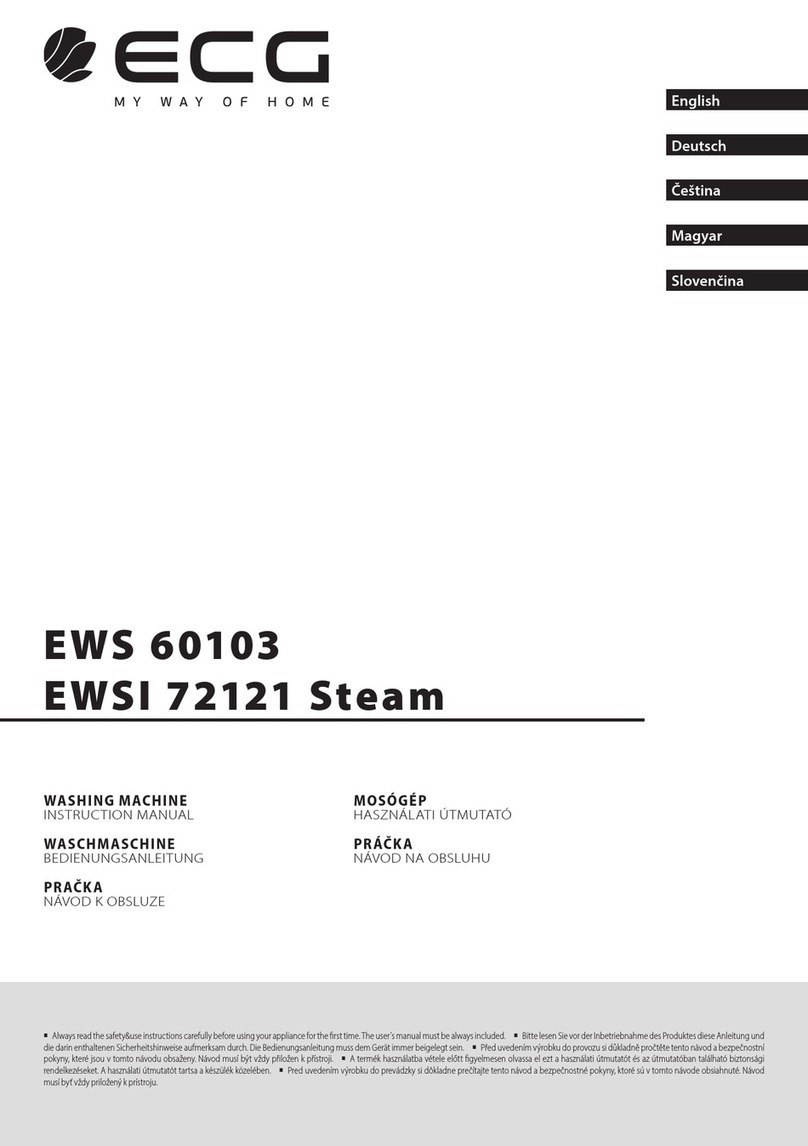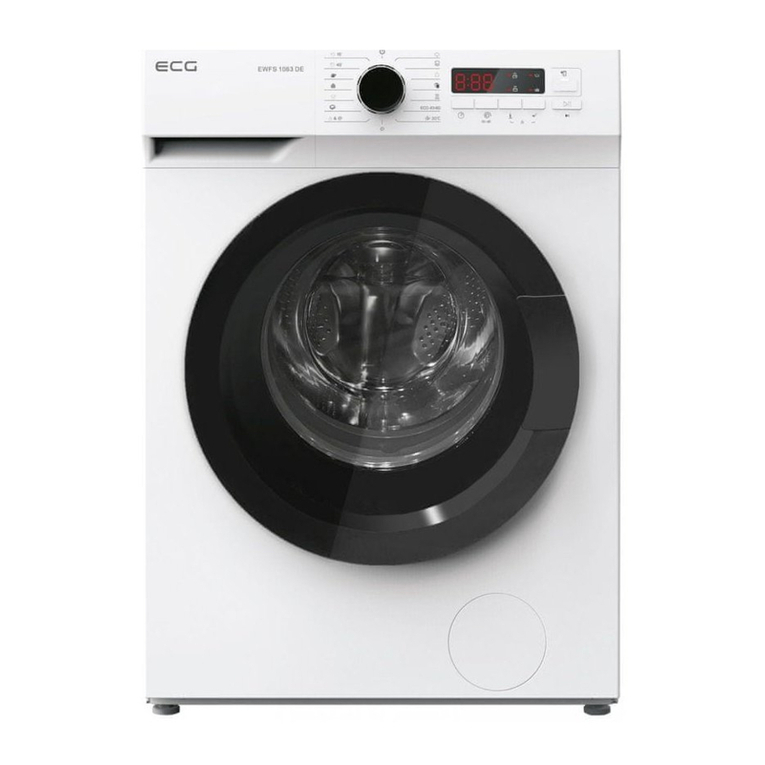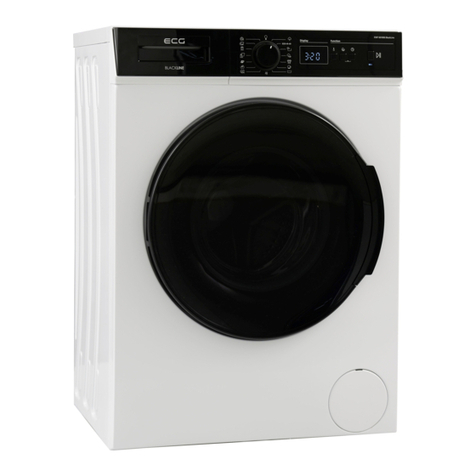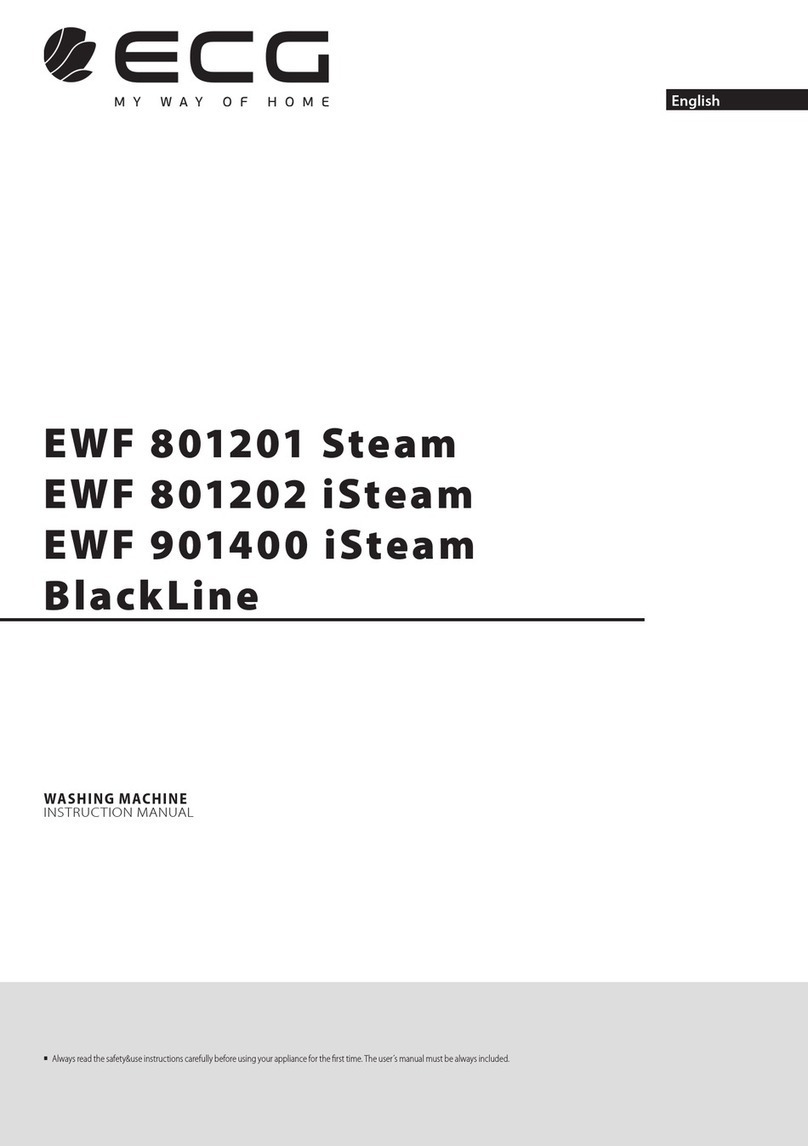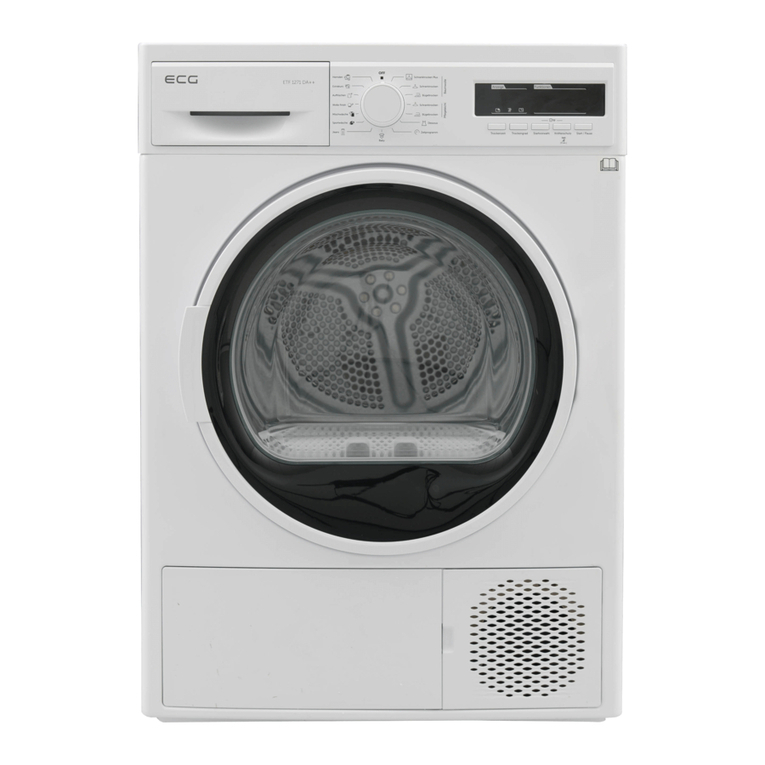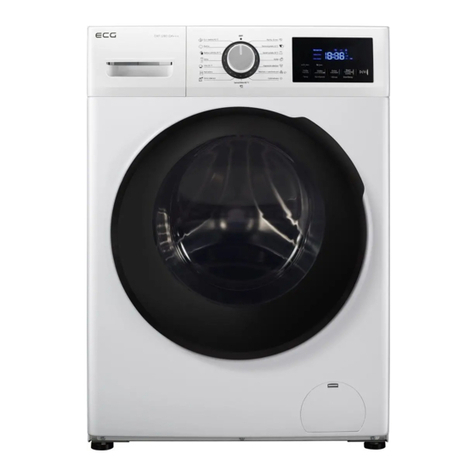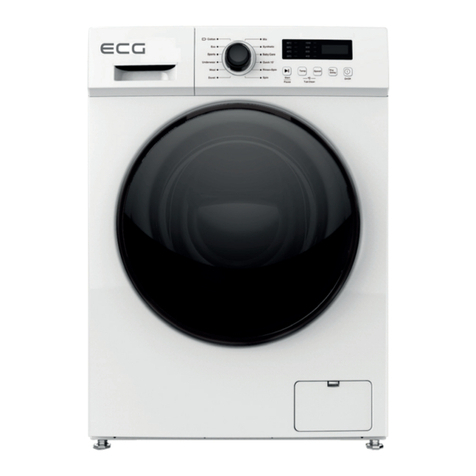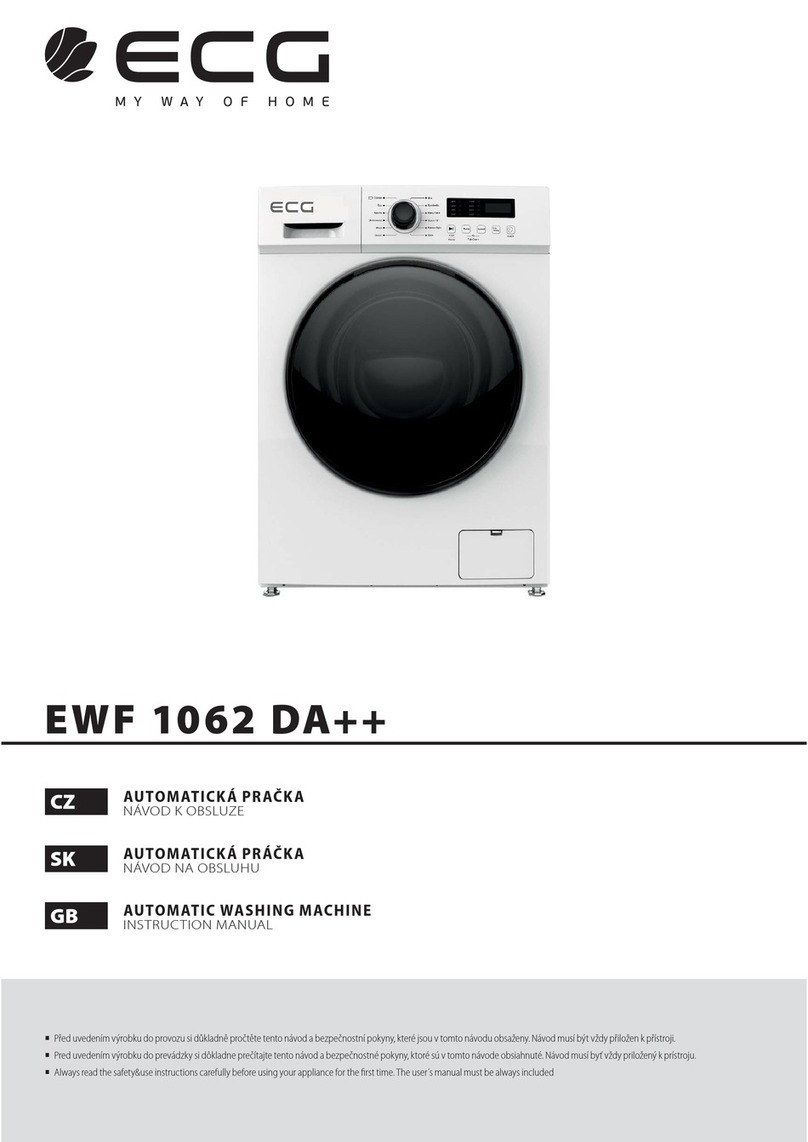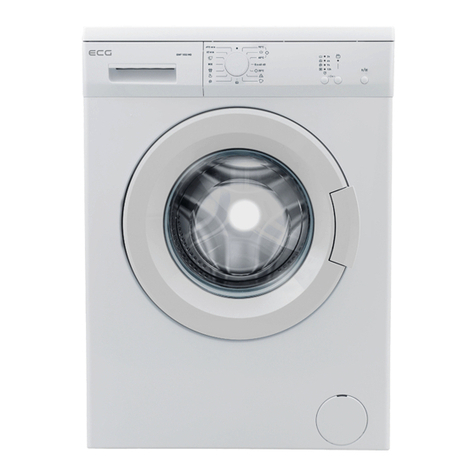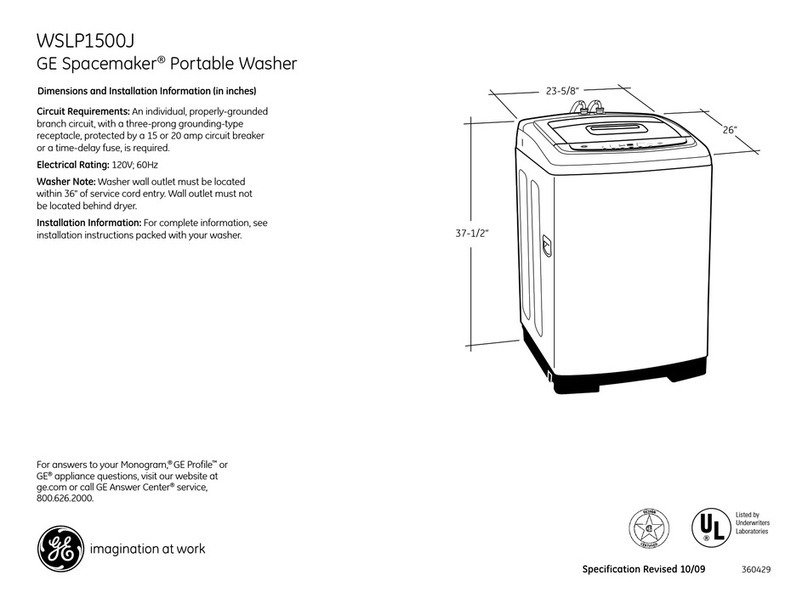
English
English
6
26.This washing machine is intended for indoor use only.
27.Do not install the appliance in wet or damp rooms, as well as in
rooms where appear explosive or corrosive gases.
28.This appliance is intended for use by children 8 years of age and
older and persons with reduced physical or mental abilities or lack of
experience and knowledge, provided they are under supervision or
given instructions concerning use of the appliance in a safe manner
and understand the potential hazards. Cleaning and maintenance
by the user must not be done by children unless they are older than
8 years old and under supervision. Children under the age of 8 must
keep away from the appliance and the power supply.
29.Any intervention in the appliance by a person other than an
authorized service provider results in loss of warranty.
30.The warranty does not cover damage caused by outside eects
(ood, chemicals, re, etc.).
31.The manufacturer is not liable for any damage caused by improper
grounding/use. DANGEROUS VOLTAGE, RISK OF INJURY!
RECOMMENDATION
• Before using your new washing machine, ask for help with the installation and putting in operation a
qualied plumber or an authorized service center.
• Install the washing machine in a well ventilated area with adequate air circulation. Place the appliance so
that it can fully open the washing machine door. The washing machine is not intended as a built-in or for
integration into furniture sets.
• The ideal ambient temperature for the washing machine operation is 15°C to 25°C.
• Frozen hoses can rot and break. In areas where the temperature drops below freezing, the temperature
may jeopardize the safe operation of electronic circuits.
• We recommend that the rst washing cycle be undergone without laundry for„90° white cotton“ so that
you pour in the second compartment of the detergent drawer ½ measuring cup of detergent.
• Since long term contact with air can lead to deposition of detergent or fabric softener, pour the detergent
and fabric softener into the compartment until just before the intended wash.
• We recommend using the prewash program only for heavily soiled laundry.
• The amount of laundry loaded into the washing machine must not exceed the maximum permitted
amount. Otherwise, the washing machine will run in the safe mode.
• Use the washing machine only for laundry that is labelled by the manufacturer as suitable for machine
washing.
• When using fabric softener and similar products in your machine, follow the manufacturer's
recommendations for detergent/fabric softener.
• Make sure that there are no foreign objects in the pockets of the laundry pieces put in the washing
machine (nails, needles, coins, lighters, matches, clips, etc). These foreign objects could damage the
washing machine.
• Washing very dusty clothing damages your washing machine. Shake heavily dusty clothing before placing
it in the washing machine.

